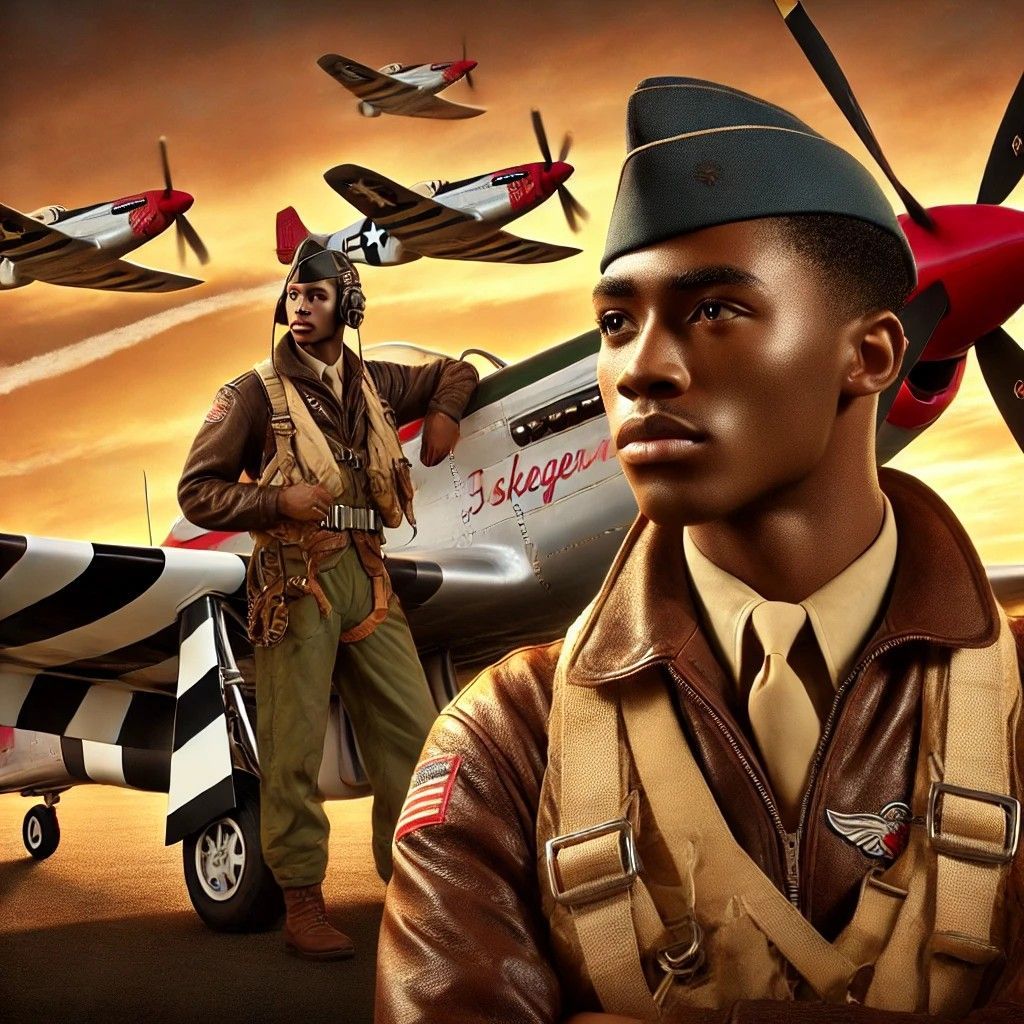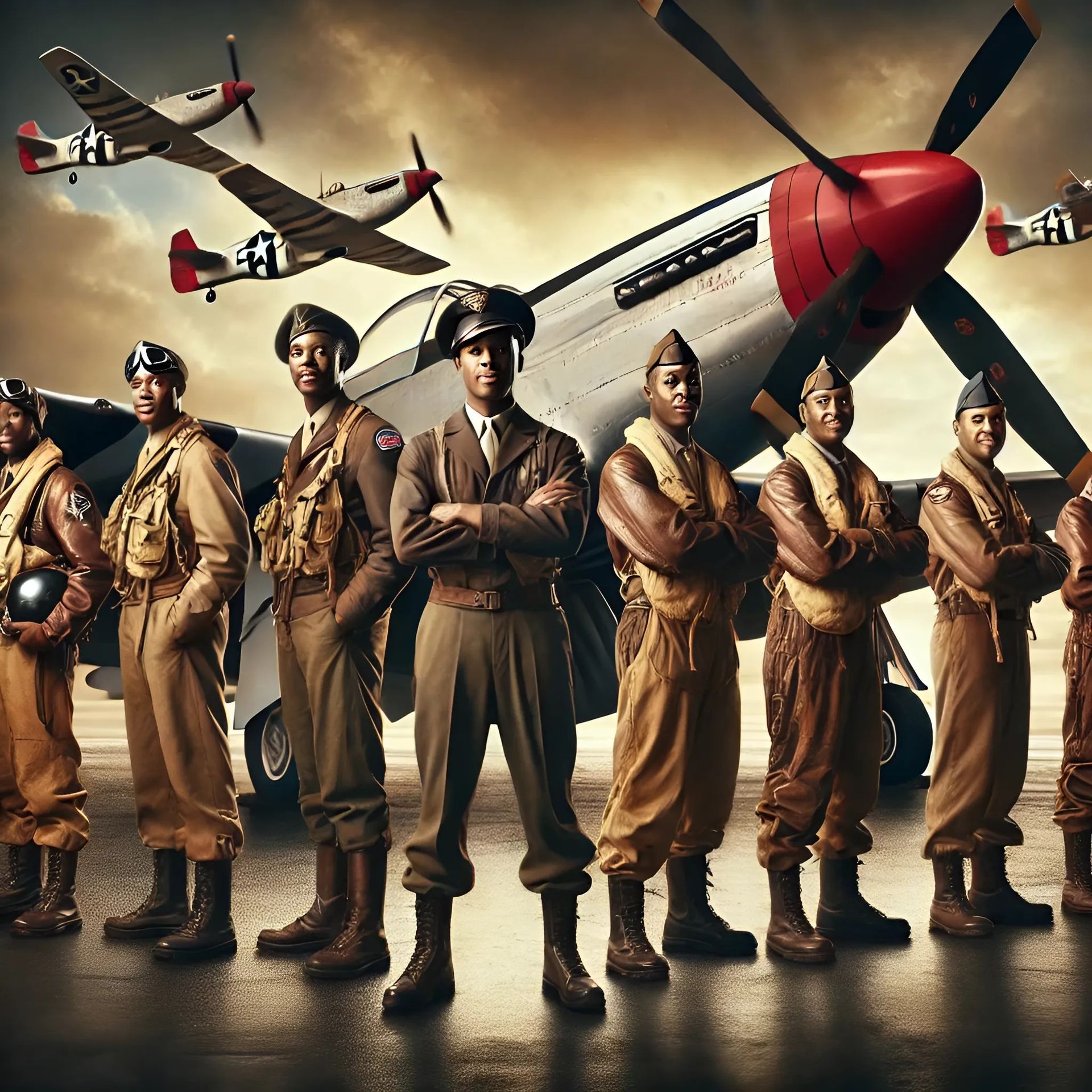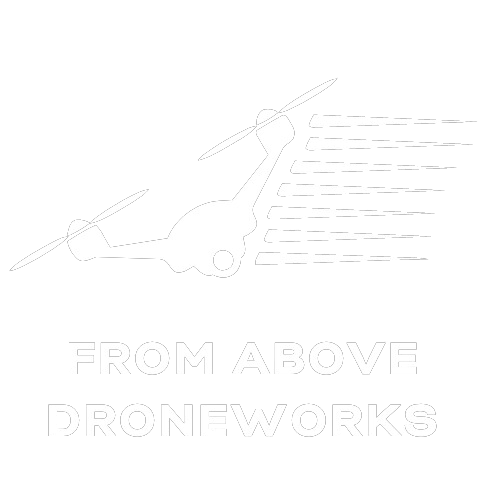The Untold Connection Between the Tuskegee Airmen and Drone Pilots Today
The Aviation Legacy That Still Flies Today

I’ve always been fascinated by flight. As a veteran and drone pilot, aviation has been more than just technology—it’s about pushing boundaries, breaking barriers, and seeing the world from a new perspective. But before drones, before modern aviation, there were the Tuskegee Airmen—pioneers who didn’t just fly; they made history.
The Tuskegee Airmen were the first African American military aviators, proving their skill and precision during World War II. They didn’t just fly missions—they shattered racial barriers, redefined excellence in aviation, and inspired generations. Their iconic Red Tails P-51 Mustangs became symbols of courage, determination, and unmatched skill in the skies.
For me, their story is personal. The values that made them legendary—discipline, precision, resilience—are the same qualities that drive me as a drone pilot today. They didn’t just change history; they shaped the future of aviation, including the rapidly growing world of drones.
But how does a story from over 80 years ago still influence modern drone pilots, veterans entering aviation, and the future of aerial technology? Let’s explore how their legacy continues to impact flight today and what we, as drone pilots, can learn from their journey.
The Tuskegee Airmen’s Legacy in Aviation
Breaking Barriers in the Skies
Imagine being told you couldn’t fly—not because you lacked skill or discipline, but because of who you were. That was the reality for the Tuskegee Airmen before they proved everyone wrong.
They weren’t just pilots; they were trailblazers who refused to be grounded. Against the odds, they flew over 15,000 combat missions in World War II, earning more than 150 Distinguished Flying Crosses. Their red-tailed P-51 Mustangs became symbols of skill, precision, and unshakable courage.
But their story isn’t just about history—it’s about inspiration.
As a drone pilot and veteran, I see the same spirit in today’s aviation industry. The Tuskegee Airmen had to prove themselves, just like modern drone pilots are pushing boundaries in aerial technology, emergency response, and commercial industries.
Their legacy isn’t just something to remember—it’s something to carry forward every time a pilot takes to the skies.
Flying with Purpose
The Tuskegee Airmen didn’t just fly planes—they flew with purpose. Every mission was more than a military operation. It was a statement, a chance to prove they belonged in the sky, to show that skill, discipline, and determination matter more than race.
That same purpose-driven flying continues today.
For drone pilots, flight isn’t just about capturing footage or mapping terrain. It’s about impact. Some use drones to assist in search and rescue missions, helping locate missing people faster than ground teams ever could. Others monitor wildfires and natural disasters, providing critical aerial data that helps first responders save lives.
Drones are also shaping the future in security, infrastructure inspections, and scientific research. From tracking wildlife populations to surveying unstable structures, drone pilots are redefining how we see and interact with the world from above.
The Tuskegee Airmen operated under intense pressure, mastering precision flying in high-stakes combat. Today’s drone pilots must also operate with focus and discipline, navigating complex airspace, strict regulations, and rapidly advancing technology. Aviation has always been about pushing boundaries, and drones are leading the next evolution of flight across industries.
The legacy of the Tuskegee Airmen is more than history—it’s a blueprint for progress. They proved that determination can break barriers, that courage can reshape industries, and that flight isn’t just about being in the air. It’s about making a difference.
Their mission didn’t end when the war was over. It lives on in every pilot who refuses to accept limits and continues to push the skies forward.

Impact on Military Aviation History
The Tuskegee Airmen’s legacy goes beyond their success in the air. Their performance in combat forced the U.S. military to rethink who could serve as aviators, challenging deep-seated prejudices and reshaping military policies.
Their effectiveness in battle wasn’t just about skill—it was about proving a point. Time and again, they completed high-risk bomber escort missions with precision, saving countless lives. Their success didn’t go unnoticed. Just a few years after World War II, their contributions played a key role in President Truman’s decision to sign Executive Order 9981, which ended segregation in the U.S. military.
This shift didn’t just open doors for African American pilots—it set the stage for a more diverse aviation industry. The same spirit of resilience that drove the Tuskegee Airmen continues to push aviation forward today, from fighter jets to unmanned aircraft.
In modern drone operations, precision and situational awareness remain just as critical as they were during wartime. The ability to navigate complex airspace, execute strategic missions, and adapt to evolving technology mirrors the same principles the Tuskegee Airmen mastered decades ago. Their legacy reminds us that aviation isn’t just about flying—it’s about advancing what’s possible.
By breaking barriers in the past, they opened the skies to new generations of pilots. Their influence continues to shape military aviation, ensuring that the future of flight remains built on skill, strategy, and the willingness to challenge limitations.
What the Tuskegee Airmen Taught Me About Drone Piloting
Attention to Detail
The Tuskegee Airmen were known for their precision. Every maneuver, every decision, and every mission relied on their ability to execute with accuracy under pressure. Their attention to detail wasn’t just a skill—it was a necessity for survival.
That same level of precision is just as important in drone piloting today. Every flight requires careful planning, from assessing weather conditions to complying with airspace regulations. A small oversight in mapping or inspection work can lead to errors that impact safety, data accuracy, or mission success.
As drone pilots, we don’t just fly—we analyze, calculate, and adjust. The Tuskegee Airmen’s dedication to excellence serves as a reminder that mastery of detail separates a good pilot from a great one. Their legacy pushes us to refine our skills, hold ourselves to high standards, and ensure that every operation is conducted with precision and responsibility.
Overcoming Challenges
The Tuskegee Airmen didn’t just face obstacles in combat—they faced them every step of the way. From racial discrimination to doubts about their abilities, they had to fight for their place in aviation before they even got the chance to prove themselves in the sky.
Their perseverance is a powerful lesson for drone pilots today. The challenges we face may look different, but the mindset required to overcome them remains the same. Whether it’s navigating complex regulations, troubleshooting technical malfunctions, or educating industries about the value of drone technology, the ability to push forward is what defines success.
Instead of seeing challenges as roadblocks, the Tuskegee Airmen remind us to treat them as opportunities for growth and innovation. Their resilience paved the way for a new era in aviation, and that same spirit continues to push drone technology forward today.
Success in aviation—whether in a fighter jet or behind a drone controller—isn’t just about flying. It’s about adapting, proving your skills, and constantly striving for improvement. The lessons of the Tuskegee Airmen serve as a reminder that persistence, dedication, and an unwillingness to accept limits will always lead to progress.
Honoring Their Legacy in Drone Aviation
Red Tails Pilots and Their Legacy
The Red Tails pilots were more than skilled aviators. They represented discipline, precision, and perseverance. Their red-tailed P-51 Mustangs were not just aircraft; they were symbols of resilience.
Their missions in World War II set a new standard for excellence in aviation. They executed operations with accuracy, adapted to challenges, and proved their capabilities under pressure. Their success was not just about winning battles. It reshaped the future of aviation by breaking down barriers and opening doors for future pilots.
Drone pilots today follow a similar path. Success requires precision, adaptability, and a commitment to improvement. The Red Tails set an example for those who take to the skies, whether through manned aircraft or unmanned technology. Their legacy is a reminder that aviation is built on skill, responsibility, and continuous learning.
Veterans in Drone Aviation
Many veterans transition into drone aviation after military service. The skills developed in the armed forces—strategic thinking, discipline, and attention to detail—are valuable in this industry. These qualities allow veterans to operate in complex environments, manage evolving technology, and maintain safety standards.
The Tuskegee Airmen’s journey serves as a powerful example of perseverance. They proved that dedication and excellence lead to progress. Veterans entering drone aviation can relate to this mindset. Adapting to new challenges, proving their expertise, and pushing the industry forward requires the same resilience.
The contributions of veterans strengthen the aviation industry. They bring experience, leadership, and problem-solving abilities that shape the future of flight. Their involvement ensures that the values of discipline and innovation continue in modern aviation.
The Future of Flight is in Our Hands
The Tuskegee Airmen changed aviation forever. Their impact is seen in every part of the industry, including drone technology.
Aviation continues to evolve, and drones are leading many of these advancements. These systems are improving disaster response, security, agriculture, and infrastructure. The potential for drones continues to grow, but technology alone does not define the future of flight. The individuals behind the controls shape where aviation goes next.
Honoring the Tuskegee Airmen means continuing their legacy of progress. It means embracing innovation, striving for excellence, and ensuring that aviation remains open to those with the skill and determination to contribute.
Their influence did not end with their missions. It lives on in every pilot who seeks to expand the possibilities of flight.
Continuing the Legacy in Drone Aviation
Honoring African American Aviation Pioneers
The Tuskegee Airmen were more than pilots. They were leaders, innovators, and fighters who refused to be told they did not belong in the sky. Their courage changed aviation forever, opening doors that had been closed for too long.
Their legacy is a reminder that aviation should be for everyone. It is why I believe in helping more people see a future in flight—through drones, education, and mentorship. When young pilots see what is possible, they are more likely to chase their own dreams in aviation.
Sharing their story is not just about honoring the past—it is about building the future. That is why I stay involved in community programs and work to introduce more people to drone aviation. It is one way to make sure the lessons of the Tuskegee Airmen keep moving forward.
Helping Veterans Find a New Mission in Drone Aviation
For veterans, the transition to civilian life is not always easy. Many of us leave the military searching for a new sense of purpose. I found mine in drone aviation. It is a field that values the same skills—discipline, precision, and problem-solving under pressure.
The Tuskegee Airmen’s journey reminds me that adapting to challenges is part of progress. They had to prove themselves in a world that underestimated them. Veterans face different struggles, but the mindset is the same: adapt, overcome, and succeed.
That is why I work to help veterans step into drone aviation. There are real opportunities for those who want to apply their military experience to a new career. Through training, mentorship, and hands-on experience, veterans can continue to serve—just in a different way.
The skills are already there. It is just about knowing where to apply them.
Redefining Flight with Drone Technology
Aviation has always been about pushing limits. The Tuskegee Airmen proved that, and today’s drone pilots are continuing that mission in new ways.
Drones are being used to help first responders, improve security, and even protect the environment. Every year, new applications emerge that change how we see and interact with the world from above.
For me, it is about more than just flying. It is about using drones to solve problems and open doors for more people to get involved in aviation. The future of flight is no longer just about traditional aircraft. It is about innovation, access, and making aviation work for more industries than ever before.
The Tuskegee Airmen reshaped aviation in their time. Now, it is our turn to keep that momentum going.
Carrying Their Mission Forward
The best way to honor the Tuskegee Airmen is by continuing their work. They did not just break barriers—they proved that flight should be for those with the skill and determination to make a difference.
That lesson still matters today. It is why I stay involved in community aviation programs and work with the War Eagles Air Museum in El Paso and Santa Teresa, New Mexico. Sharing their story with the next generation keeps their mission alive.
The Tuskegee Airmen changed aviation, but the work is not finished. Their influence can be seen every time a new pilot takes off, every time someone discovers a passion for flight, and every time we push the boundaries of what aviation can do.
Their story did not end with them. It continues with us.
Want to Learn More?
The story of the Tuskegee Airmen is one worth exploring. Their impact on aviation, military history, and civil rights is something every pilot—drone or otherwise—should understand.
For those looking to dig deeper, the National Air and Space Museum has great resources and exhibits about their contributions. Books, documentaries, and aviation courses provide even more insight into the struggles they overcame and the victories they achieved.
If you want to see their impact firsthand, I invite you to visit the War Eagles Air Museum. Seeing their legacy in person makes their story even more real.
The more we learn, the better we can carry their mission forward. Their story is not just history—it is a challenge to keep pushing forward, to keep innovating, and to keep the skies open for those who are ready to fly.

